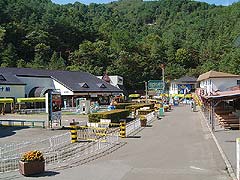
Most of the production of Morioka Pass is sand gold, and sand gold is mined in Shirane Kanayama, which was first developed in deer horn.
However, the western road Kanayama, which was subsequently developed, and the Mt. Okinawa of Oyorizawa are being excavated as gold mines from among the dykes of the mountains. At Oyorizawa Mine, there were many gold and silver near the surface of the mountain and copper ore at the deep part, so gold and silver were first found in outcrop-like veins, and eventually mines were traced along veins. Is considered to have advanced as a copper mine.
The Ogyoshizawa Mine is a mine with many veins in a mass of approximately 3 kilometers north to south and approximately 2 kilometers east to west, centered on Mt. Omori (535 meters, also known as Mt. Omori). Old gold mines and copper mines surrounded Tamoriyama, and westwards and fifty sheets in the east, Akazawa, Nagasaka, Kashiyama in the south, Motoyama and Tagun in the west, gold mountains and copper mines such as Sakiyama in the north were developed. . These mines were different from one another in their developmental age, and were in steep mountains, so they were considered as separate mines until the end of the Edo period.
On the south side of Mainland Oyorizawa, the mountain with the flag on the mountain top is called fifty sheets, and it is the trace of the former fifty gold mountains. It is said that Yamanome's name is that it has stored 50 mag in a month (about 8.3 kg) in a magistrate's office as money for good luck, and tells the prosperity of Jinshan to the present. However, unfortunately, the amount of production of the entire mine has hardly been elucidated.
